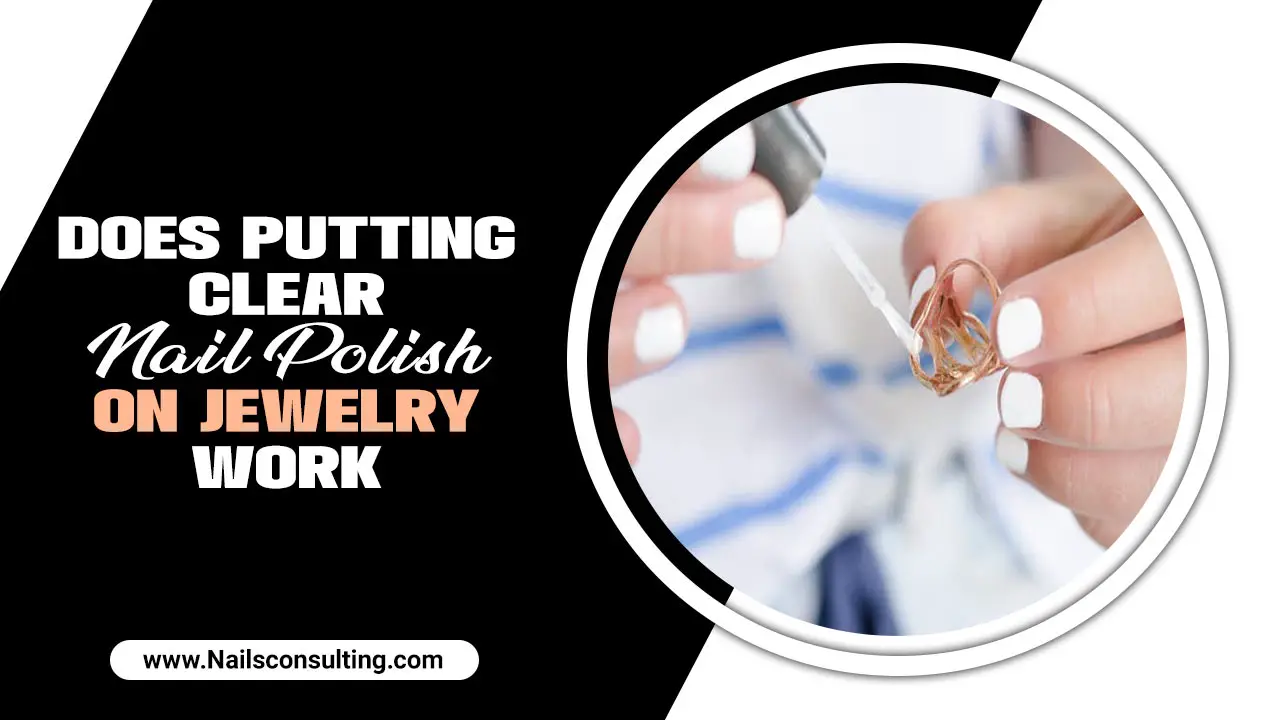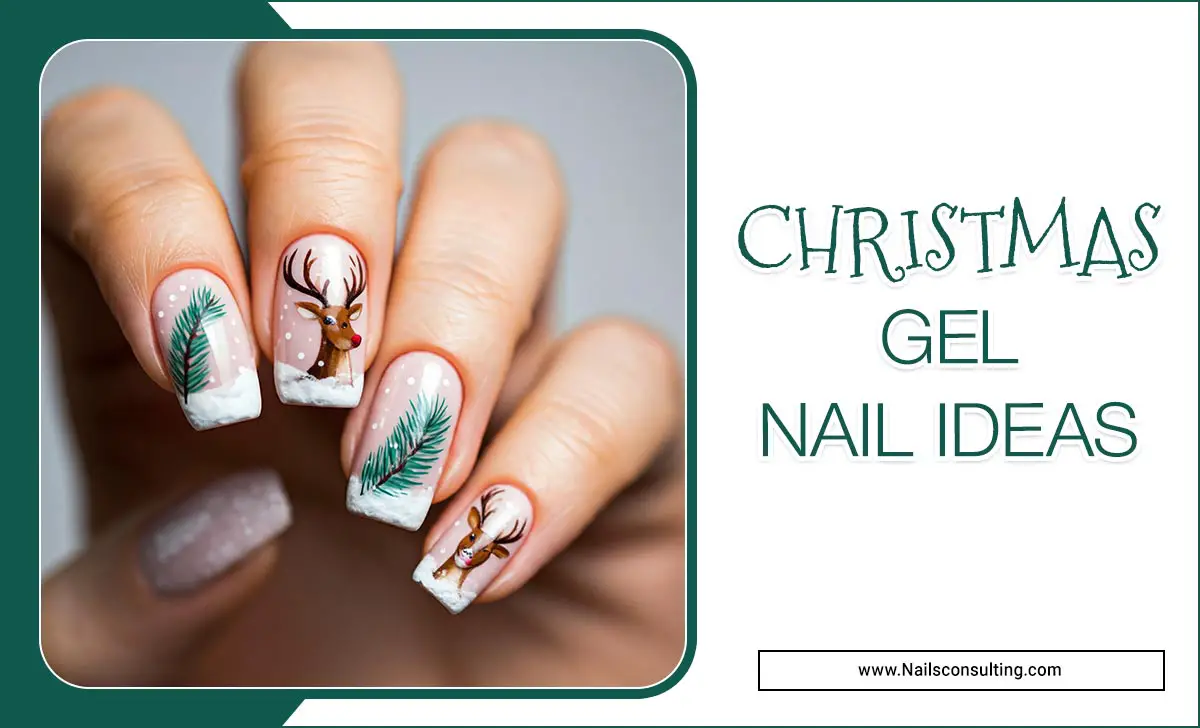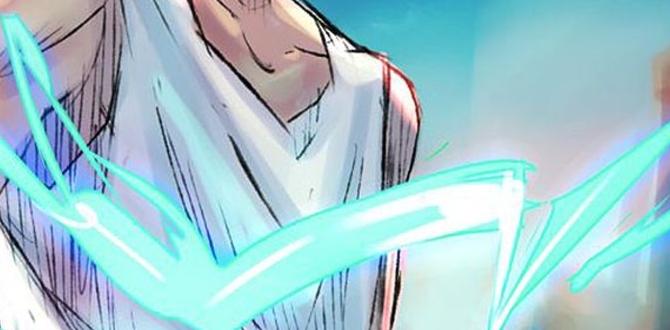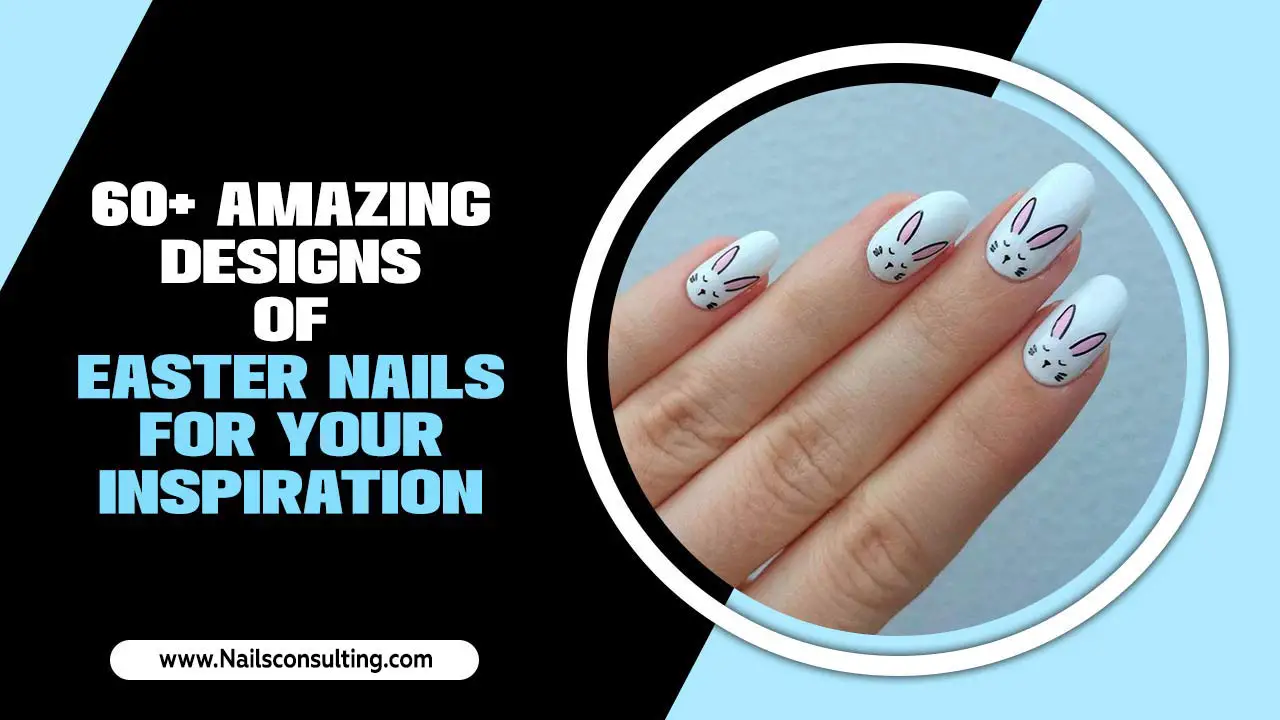Quick Summary: Geometric nail designs offer a modern, chic way to express your style. From simple stripes to complex patterns, these looks are surprisingly easy for beginners to master. Learn the essential shapes, tools, and techniques to create stunning geometric manicures that elevate your nail game instantly.
Hello, nail lovers! Are you ready to add some serious wow-factor to your fingertips? Sometimes, finding nail inspiration that’s both trendy and totally doable can feel a bit tricky. You see those amazing geometric patterns online and think, “How do they DO that?!” Well, guess what? You absolutely can too! Geometric nail designs are a fantastic way to play with color, shape, and precision, and they’re more beginner-friendly than you might imagine. Forget complicated art – we’re talking clean lines, simple shapes, and stylish patterns that look professionally done but are totally achievable at home. Get ready to transform your nails into miniature works of art!
In this guide, we’ll break down exactly how to create these stunning looks. We’ll cover the must-have tools, simple techniques, and some of the most popular geometric styles. You’ll discover how easy it is to achieve clean lines and sharp angles. Let’s dive into the world of geometric nail art and unlock your inner nail artist!
What Are Geometric Nail Designs?
Geometric nail designs are all about using shapes and lines to create patterns on your nails. Think squares, triangles, circles, lines, and even more complex arrangements. They’re a fantastic way to bring a modern, minimalist, or even bold and graphic vibe to your manicure. The beauty of geometric designs lies in their versatility. They can be as simple as a single stripe or a half-moon, or as intricate as a diamond lattice or interlocking triangles. This makes them perfect for any occasion, from a chic everyday look to a statement for a special event.
Why Try Geometric Nail Designs?
There are so many reasons to love geometric nail designs:
- Chic & Modern Aesthetic: Geometric patterns are inherently stylish and always on-trend. They add a sophisticated touch to any outfit.
- Versatility: Whether you prefer subtle accents or bold statements, geometric designs can be adapted to your taste.
- Beginner-Friendly: Many geometric designs rely on simple shapes and clean lines, making them achievable even for those new to nail art.
- Endless Creativity: The possibilities are truly endless! You can mix and match colors, shapes, proportions, and placements.
- Professional Look: With a little practice, you can achieve salon-quality results right at home.
Essential Tools for Geometric Nail Designs
To create beautiful geometric nail designs, you don’t need a whole salon’s worth of equipment. Here are the key tools that will make your life so much easier:
| Tool | What It’s For | Why You Need It |
|---|---|---|
| Fine-Tipped Nail Art Brushes | Drawing thin lines, small shapes, and intricate details. | Essential for precision. Look for brushes with stiff bristles that don’t splay easily. |
| Striping Tape or Nail Tape | Creating perfectly straight lines and sharp edges. | This is a game-changer for beginners! It acts as a stencil. |
| Dotting Tools | Making dots of various sizes and creating small circular shapes or patterns. | Great for polka dots, creating centers for flowers, or adding small accents. |
| Stencils (Optional) | Pre-cut shapes to fill in for quick geometric designs. | A simple way to achieve complex looks with minimal effort. |
| Base Coat and Top Coat | Protecting the nail and making the polish last, and sealing the design. | Crucial for a smooth, long-lasting manicure. A good top coat makes designs pop and prevents chipping. |
| Nail Polish Remover & Cotton Swabs/Pads | Cleaning up mistakes and refining edges. | Mistakes happen! Having these on hand ensures a clean finish. Cotton swabs are great for precision cleanup. |
| Tweezers | Applying small decals, gems, or lifting tape. | Helps with intricate placement and careful removal of tape. |
Investing in a few good quality brushes and some striping tape will dramatically improve your geometric nail art game. For more on nail art tool basics, check out this helpful guide from NailPro.
Mastering the Basics: Techniques for Clean Lines and Shapes
Achieving that crisp, clean look in geometric designs is all about technique. Don’t worry if your first few attempts aren’t perfect – practice makes progress!
Technique 1: The Striping Tape Method
This is arguably the easiest way to get razor-sharp lines when you’re starting out.
- Prep Your Nails: Start with clean, dry nails. Apply your base coat and let it dry completely.
- Apply Your First Color: Paint your nails with your desired base color(s). Let this layer dry thoroughly until it’s not tacky to the touch. This is crucial to prevent the tape from lifting the polish.
- Apply the Striping Tape: Carefully apply strips of nail tape or geometric stencils onto your nails in the pattern you want. Press down firmly along the edges to ensure a good seal. You can create stripes, triangles, squares, or any shape imaginable.
- Paint Over the Tape: Apply your contrasting color(s) over the taped areas. You can paint one color, or multiple colors for a multi-dimensional look.
- Remove the Tape: While the top color is still slightly wet (but not runny!), carefully peel off the striping tape using tweezers or your fingers. Peeling when the polish is mostly dry prevents smudging, but if it’s too dry, it can peel the polish underneath. It’s a delicate balance!
- Seal the Deal: Once your design is completely dry, apply a generous layer of top coat to protect your art and add shine.
Technique 2: Freehanding with Fine Brushes
This method gives you more freedom and is great for smaller details or when you don’t have tape.
- Prep and Base Color: As always, start with a clean nail and your base coat. Apply your main polish color and let it dry completely.
- Load Your Brush: Dip your fine-tipped nail art brush into your design color. Don’t overload the brush; a little goes a long way. Wipe off any excess on the side of your polish bottle or a lint-free wipe.
- Steady Your Hand: Rest your pinky finger on a stable surface or the side of your other hand for support. This is key to drawing steady lines.
- Draw Your Lines: Gently glide the brush across your nail to create your desired lines – stripes, zigzags, or outlines for shapes.
- Refine and Detail: Use the tip of your brush for sharp corners and precise endpoints. You can also use the brush to fill in shapes.
- Cleanup: Dip a cotton swab or a fine brush into nail polish remover for any small mistakes around the edges.
- Top Coat: Once everything is dry, finish with a protective top coat.
Technique 3: Dotting Tool Magic
Dotting tools are simple but incredibly effective for creating patterns and filling in geometric shapes.
- Base Preparation: Apply base coat and your main polish color. Let it dry.
- Choose Your Dotting Tool: Dotting tools come with different sized ball tips. Select one that suits the size of the dot you want to create.
- Get the Polish: Dip the ball tip into your polish color. Again, don’t overload it.
- Place Your Dots: Gently press the tip onto your nail to leave a perfect dot. For continuous patterns, re-dip your tool as needed.
- Fill or Connect: You can create polka dots, connect dots to form lines or shapes, or even create confetti-style patterns.
- Top Coat: Seal your masterpiece with a top coat.
Stunning & Essential Geometric Nail Looks for Beginners
Ready to try some designs? Here are some popular and easy geometric nail looks that are perfect for anyone starting their nail art journey.
1. The Classic Stripe
Description: Simple, elegant, and universally flattering. This design features one or more clean, straight lines. You can go for a single accent stripe on one nail, parallel stripes across all nails, or even a diagonal stripe.
How-To: Use the striping tape method or a fine-tipped brush. For a single line, apply tape diagonally or vertically, paint over it, and peel. For multiple lines, space them out evenly with tape. A single brushstroke can also create a chic thin stripe.
Variations: Vertical, horizontal, diagonal, thin, thick, metallic, matte.
2. The Half-Moon Manicure
Description: A retro-inspired look that’s super stylish. It involves coloring the natural moon shape at the base of your nail (the lunula) in a different color, or leaving it bare. This is also known as a reverse French manicure.
How-To: You can use a small round sticker or specialized curved stencils to mark off the moon shape. Paint the rest of the nail. Once dry, remove the stencil and paint the moon shape, or seal the design if leaving it bare.
Variations: Solid colors, glitter moons, metallic moons, contrasting colors.
3. The Color Block
Description: This design creates distinct sections of color on the nail, often using straight lines to divide the nail into geometric areas like squares, triangles, or rectangles.
How-To: Use striping tape to create borders for your color blocks. Paint one section, let it dry completely. Apply tape over the dried section, then paint the next. Repeat as needed. Ensure tape adhesion is perfect to prevent color bleed.
Variations: Two-tone blocks, three-color blocks, ombre blocks (where colors blend slightly at the tape line, which is advanced!).
4. The Chevron
Description: A V-shaped design, often at the tip of the nail or at the cuticle line. It’s a classic geometric pattern.
How-To: The easiest way is to use small triangular stencils or carefully place striping tape to create a V-shape. Paint around the stencil. For freehand, you’ll need a steady hand and thin brush to draw the inverted V. You can also use the striping tape method by painting the whole nail, applying tape in a V-shape, and painting over it.
Variations: Double chevron, inverted chevron (at the cuticle), different color combinations.
5. The Minimalist Dot
Description: Subtle yet impactful. A single dot (or a few strategically placed dots) can add a touch of geometric flair without being overwhelming.
How-To: Use a dotting tool or the end of a toothpick. Dip it into polish and gently press onto your nail. You can place a single dot near the cuticle, on the side of the nail, or create a tiny constellation.
Variations: Single dot, multiple dots, dots of different sizes, dots in a line, dots forming a shape. For more on dotting tools, explore this guide on Olive & June.
6. The Geometric Accent
Description: Focus your geometric design on just one or two accent nails while the rest are a solid color. This is a great way to experiment without committing to a full-on patterned manicure.
How-To: Paint most nails with your base color. On one or two nails, create a simple geometric design using any of the techniques above – a few lines, a triangle, a small block of color. Contrast is key here!
Variations: Any geometric shape or pattern applied to a single nail.
Tips for Success with Geometric Designs
Here are some extra tips to help you achieve salon-worthy geometric nail art:
- Patience is Key: Rushing will lead to smudges and uneven lines. Take your time, especially when waiting for polish to dry or carefully removing tape.
- Thin Coats are Best: Thick layers of polish take longer to dry and are more prone to smudging. Apply thin, even coats for quicker drying and cleaner results.
- Good Lighting Matters: Make sure you have excellent lighting so you can see what you’re doing. Natural light is ideal if possible.
- Steady Your Hand: As mentioned, always rest your supporting hand or fingers on a stable surface. It significantly improves control.
- Practice on Nail Art Swatches: Before trying a design on your actual nails, practice on paper, plastic cards, or even fake nails. This helps you get a feel for the tools and polish.
- Master Polish Consistency: If your polish is too thick, it can be clumpy. If it’s too thin, it might run and be hard to control. A good quality polish or a nail polish thinner (used sparingly!) can help.
- Clean Edges: Keep nail polish remover and a fine-tipped brush or a cleanup brush handy. A quick swipe along the cuticle or sidewalls after application makes a huge difference. For a professional guide to cleaning up manicure mistakes, this resource from the Healthline is excellent.
- Don’t Forget the Top Coat! A good quality, quick-drying top coat will seal your design, add shine, and protect your hard work from chips and smudges.
FAQ: Your Geometric Nail Design Questions Answered
Q1: What is the best polish for geometric nail art?
A1: Opaque, good-quality polishes work best. For lines, you want a formula that isn’t too thick or streaky. Cream finishes are usually easiest to work with. Gel polish can also be great as it dries hard and doesn’t smudge easily once cured.
Q2: How do I prevent polish from bleeding under the tape?
A2: Make sure the base color is completely dry before applying tape. Press the tape down firmly to create a good seal. When removing the tape, do it while the top color is slightly wet – not fully dry, but not soupy either. This is key!
Q3: My lines are shaky. How can I get them straight?
A3: Striping tape is your best friend for perfectly straight lines! If freehanding, always use a steady hand by resting your pinky finger on a surface. A good, fine-tipped brush also helps. Taking your time is crucial.
Q4: How long do geometric nail designs usually take to do?
A4: For simple designs like stripes or dots, it can take 30-60 minutes, including drying time. More complex patterns with multiple colors and layers might take 1-2 hours. Remember to factor in drying time between layers!
Q5: Can I use everyday nail polish for these designs?
A5: Absolutely! While gel polish offers durability, traditional nail polish works perfectly well for geometric designs. Just ensure it’s fully dry between steps.
Q6: What’s a good beginner geometric nail design to start with?
A6: The classic stripe or the minimalist dot are fantastic starting points. The half-moon manicure is also relatively easy if you use a stencil. These require minimal technique and tools.
Q7: How can I make my geometric nail art last longer?
A7: A good base coat, thin coats of polish, and especially a high-quality, chip-resistant top coat are essential. Reapply top coat every few days to refresh the shine and protection.
Conclusion
There you have it! Geometric nail designs are a stylish, modern, and surprisingly accessible way to elevate your manicure game. We’ve explored the essential tools, mastered techniques for clean lines and shapes, and highlighted some stunning looks perfect for beginners. Whether you’re drawn to minimalist stripes or bold color blocks, the world of




